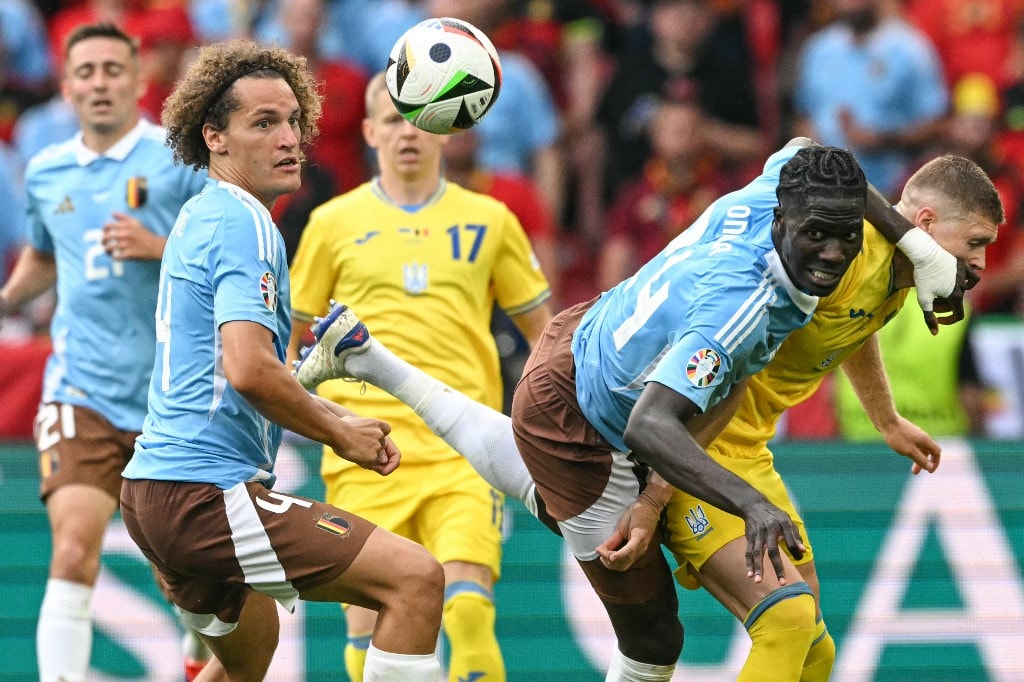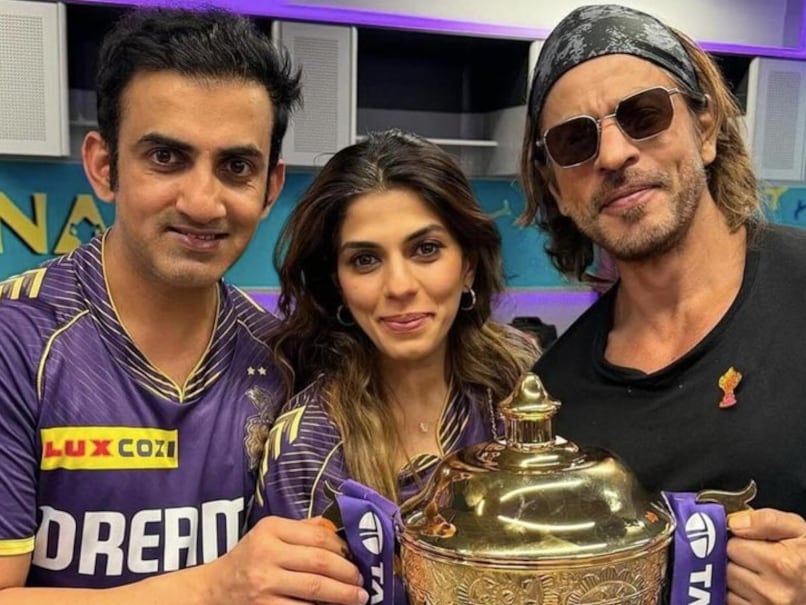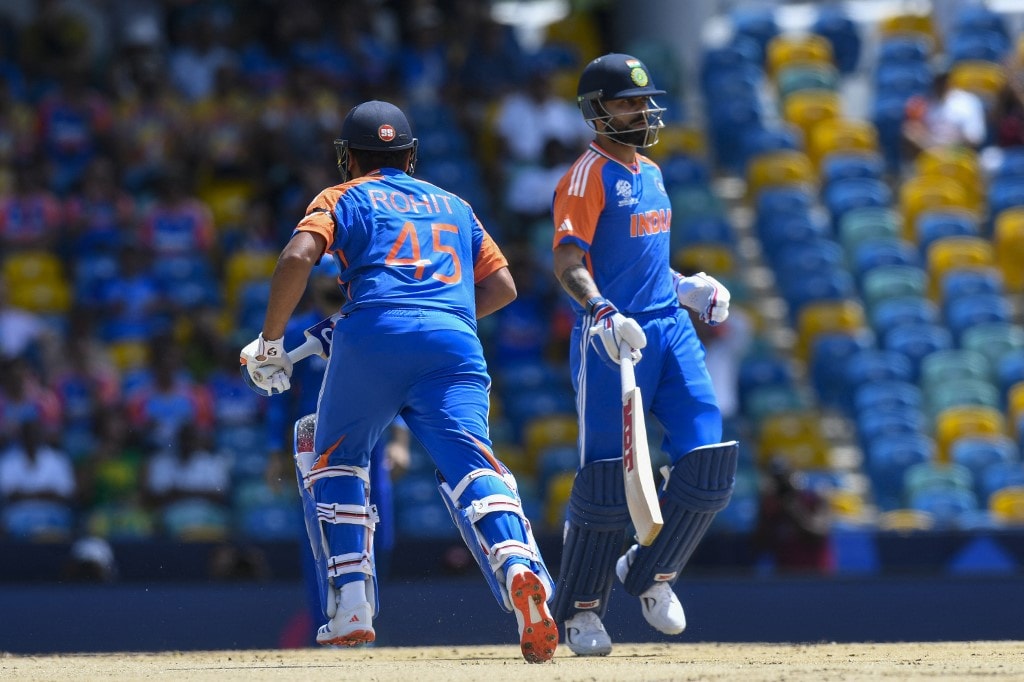As characters, they are like chalk and cheese just as any ‘vada pao’ loving Mumbaikar and a ‘chhole-bhature’ craving Delhiite are expected to be. But for every graceful cover drive, there is always a pull shot executed with panache, and that’s why Virat Kohli and Rohit Sharma, for the last decade and half, have complemented each other — in dejection, triumph and now in T20 International retirement. Together, they make the word contrast come alive — Kohli bringing in the darker shades with his dogged intensity in pursuit of excellence and Rohit with those pastel shades which manifest calm amid the storm.
Their reactions immediately after the T20 World Cup triumph painted a thousand pictures.
Rohit, first on his haunches and then lying on the ground, had tear-filled eyes throughout. Kohli, on the other hand, quietly walked back towards the dressing room, trying hard to conceal the emotions that he was feeling. He was trying to soak in the festivities but was slightly detached too.
However, there was one common thread that continued to bind them — genuine respect for each other’s craft and achievements.
And that’s one reason why they respect each other’s space. Rohit very well knew that Kohli had decided to call it quits from the format irrespective of the result.
As his colleague of nearly 16 years declared his decision at the post-match presentation, the skipper allowed him the stage and the moment without speaking a word about his own future plans.
He did it in his own inimitable style at the press conference answering what was one of the last questions of the interaction.
Kohli seemed to have decided it much in advance.
“This was an open secret, it’s time for the next generation to take over. Win or lose, I was going to announce it,” just like his preparation before a big innings, the legend had done his homework and hence the timing was immaculate.
When Rohit was asked about his retirement, his answer was typically him, straight shot and in the moment.
“I never thought that I would retire from T20s. But the situation is such, I thought it is the perfect situation for me. Nothing better than winning the cup and saying goodbye,” the skipper said, his instinctive nature shining through for the umpteenth time.
If there are two powerhouse performers operating in the same era, there is bound to be friction.
There is an old jungle saying “Ek mayan mein do talwar nahi reh sakta” (there can’t be two swords in a sheath). In Indian cricket, the stakes are so high that two swords learn to co-exist for their own good.
Sunil Gavaskar and Kapil Dev were sucked into it during the mid ’80s — a time when social media wasn’t even an idea.
Read ‘Runs in Ruins’ and ‘By God’s Decree’ and one would know that between 82 and 85, when captaincy became a game of musical chairs between the two, things were far from smooth.
But they never lost respect for what they both brought to the table.
The age in which Rohit and Kohli operated is beastly to say the least.
Over the years, the exponential growth of social media and the desperation for radical content, where fiction often is passed on as fact, the two megastars of Indian cricket were able to maintain their sanity, poise and dignity in the hullaballoo which both knew is and will remain superficial.
Conspiracy theories about their fractured working relationship was floated after the 2019 World Cup semi-final exit and also when Kohli decided to give up on T20 captaincy, not to forget when BCCI decided to promote Rohit as white-ball captain of both formats.
A few viral social media videos of Kohli speak volumes about his respect for Rohit.
“When he first came into the scene, sab bolte the ek player aaya Rohit Sharma. Main sochta tha young player toh hum bhi hain, aisa kaunsa player hai bhai ki koi humari baat nahi karta. Phir T20 World Cup mein uska innings dekha South Africa ke saath and I slumped in my sofa. Aaj ke baad choop rahna, I told myself,” this was Kohli on popular podcast Breakfast with Champions some years back talking about Rohit at a time when his own stardom had reached manic proportions.
When Rohit says: “Look, Virat has been a champion player without a doubt. And we all know what he has done for us”, it comes from a place of utmost conviction.
Kohli on his part said: “I have played six T20 World Cups and Rohit has played nine. He deserves it.” They had their different types of struggles. Kohli had to prove his mettle in a corrupt Delhi environment where his late father, an advocate, refused to pay a bribe for U-15 selection.
On the other hand, there was Rohit, whose uncle told the Swami Vivekananda School authorities in Borivali that it will be difficult to pay a monthly tuition fee of Rs 200 back in the late 90s. He was eventually offered a sports scholarship.
Much before Roger Federer had to spell it out that “effortless is a myth”, Rohit would tell anyone who would care to listen that “lazy elegance” and “talent” sounds more of an insult for all the hard work that goes into perfecting a seamless pick-up pull shot.
Just like Gavaskar lifting Kapil’s hands on the Lord’s balcony on June 25, 1983 is a memory for fans of certain vintage, the ‘Ro-Ko’ bear hug will make the millennials shed that tear accumulated at the corner of their eyes.
They are the ‘Salim-Javed’ of Indian cricket, scripting one hit epic after another. They will forever be nostalgia.
Topics mentioned in this article















